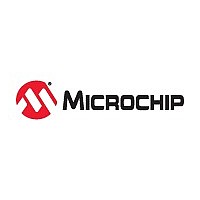dspic33fj128mc706at-i-pt Microchip Technology Inc., dspic33fj128mc706at-i-pt Datasheet - Page 23

dspic33fj128mc706at-i-pt
Manufacturer Part Number
dspic33fj128mc706at-i-pt
Description
High-performance, 16-bit Digital Signal Controllers
Manufacturer
Microchip Technology Inc.
Datasheet
1.DSPIC33FJ128MC706AT-I-PT.pdf
(342 pages)
- Current page: 23 of 342
- Download datasheet (5Mb)
2.5
The PGECx and PGEDx pins are used for In-Circuit
Serial Programming™ (ICSP™) and debugging
purposes. It is recommended to keep the trace length
between the ICSP connector and the ICSP pins on the
device as short as possible. If the ICSP connector is
expected to experience an ESD event, a series resistor
is recommended, with the value in the range of a few
tens of Ohms, not to exceed 100 Ohms.
Pull-up resistors, series diodes and capacitors on the
PGECx and PGEDx pins are not recommended as they
will interfere with the programmer/debugger communi-
cations to the device. If such discrete components are
an application requirement, they should be removed
from the circuit during programming and debugging.
Alternatively, refer to the AC/DC characteristics and
timing requirements information in the respective
device Flash programming specification for information
on capacitive loading limits, and pin input voltage high
(V
Ensure that the “Communication Channel Select” (i.e.,
PGECx/PGEDx pins) programmed into the device
matches the physical connections for the ICSP to the
MPLAB
emulator.
For more information on the ICD 2, ICD 3 and REAL
ICE in-circuit emulator connection requirements, refer
to the following documents that are available on the
Microchip web site.
• “MPLAB
• “Using MPLAB
• “MPLAB
• “Using MPLAB
• “MPLAB
• “MPLAB
• “Using MPLAB
© 2009 Microchip Technology Inc.
IH
Guide” (DS51331)
Guide” (DS51616)
(poster) (DS51749)
) and input low (V
®
ICSP Pins
ICD 2, MPLAB
®
®
®
®
ICD 2 In-Circuit Debugger User’s
ICD 2 Design Advisory” (DS51566)
ICD 3 Design Advisory” (DS51764)
REAL ICE™ In-Circuit Emulator User’s
®
®
®
ICD 2” (poster) (DS51265)
ICD 3” (poster) (DS51765)
REAL ICE™ In-Circuit Emulator”
IL
) requirements.
®
dsPIC33FJXXXMCX06A/X08A/X10A
ICD 3 or REAL ICE™ in-circuit
Preliminary
2.6
Many DSCs have options for at least two oscillators: a
high-frequency primary oscillator and a low-frequency
secondary oscillator (refer to Section 9.0 “Oscillator
Configuration” for details).
The oscillator circuit should be placed on the same
side of the board as the device. Also, place the
oscillator circuit close to the respective oscillator pins,
not exceeding one-half inch (12 mm) distance
between them. The load capacitors should be placed
next to the oscillator itself, on the same side of the
board. Use a grounded copper pour around the
oscillator circuit to isolate them from surrounding
circuits. The grounded copper pour should be routed
directly to the MCU ground. Do not run any signal
traces or power traces inside the ground pour. Also, if
using a two-sided board, avoid any traces on the
other side of the board where the crystal is placed. A
suggested layout is shown in Figure 2-3.
FIGURE 2-3:
Main Oscillator
Guard Ring
Guard Trace
Secondary
Oscillator
External Oscillator Pins
SUGGESTED PLACEMENT
OF THE OSCILLATOR
CIRCUIT
DS70594A-page 21
13
14
15
16
17
18
19
20
Related parts for dspic33fj128mc706at-i-pt
Image
Part Number
Description
Manufacturer
Datasheet
Request
R

Part Number:
Description:
Manufacturer:
Microchip Technology Inc.
Datasheet:

Part Number:
Description:
Manufacturer:
Microchip Technology Inc.
Datasheet:

Part Number:
Description:
Manufacturer:
Microchip Technology Inc.
Datasheet:

Part Number:
Description:
Manufacturer:
Microchip Technology Inc.
Datasheet:

Part Number:
Description:
Manufacturer:
Microchip Technology Inc.
Datasheet:

Part Number:
Description:
Manufacturer:
Microchip Technology Inc.
Datasheet:

Part Number:
Description:
Manufacturer:
Microchip Technology Inc.
Datasheet:

Part Number:
Description:
Manufacturer:
Microchip Technology Inc.
Datasheet:










